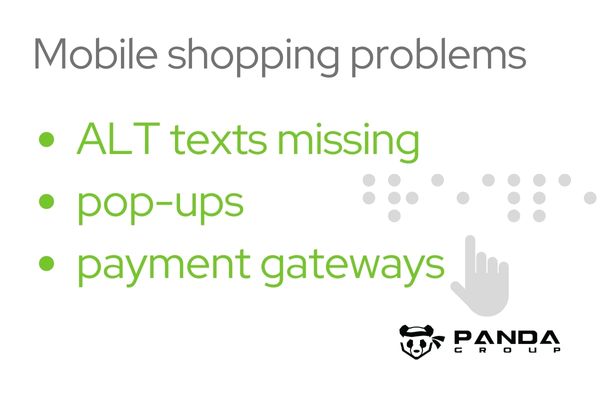Last week we had yet another chance to participate in III Accessibility Day at Snowdog. This time it was focused on sight problems and blind people’s digital and non-digital activity.
Przemek Kielar as a speaker presented his experiences with mobile devices and applications that help him to move around the city of Poznań, read books to his 2.5 year old son, and shop at the popular eCommerce store.
He mentioned that the great technology changemakers he appreciated most are Google Lookout, which recognizes objects in the surroundings, and Smart Braille supporting digital communication.

Smart Braille – old technology digitalization
Soon we will call the Braille Alphabet old technology – it is now being digitalized by apps like Smart Braille. As Przemek Kielar confirmed, blind and visually impaired people can communicate faster through their mobile phones thanks to this app. It offers a keyboard that consists of six keys, which are all scannable with the help of braille letters on the screen, so users don’t need to search around trying not to make mistakes while typing out messages or reading texts!
Another feature of the Smart Braille is based on the Google Vision API, it is able to use your camera on a mobile phone in order for it to detect text and have that information read out loud by using text speech.
To start and stop reading from the screen you need to tap it. This simple yet powerful app helps the blind interact with their surroundings more easily. During the accessibility meeting, we were reading a children’s book using the application. And though the effect was not always perfect, some parts of the text needed guessing and a creative approach is necessary to interpret the text scanned, it certainly helps and makes people’s lives easier.
Google Lookout – surrounding recognition
Lookout is an app that will tell you everything about the objects in your surroundings. You can get information like size, shape, and even color! It uses both camera vision as well as readings from sensors on Android devices, so users always have access to all of this data at their fingertips having less trouble whatsoever recognizing what they’re seeing or reading.
Mobile eCommerce accessibility
We also tested one of the popular eCommerce stores with electronics to buy a hair dryer. The first issue we discovered was no Alt Texts for buttons, the user was not informed what they are and what to use them for. Navigation on the page is troublesome and the page structure is tricky to navigate.
The problem with pop-ups is that they don’t close at all. This means the reader will keep on reading the pop-up and can not go any further into the website or app! It also causes problems when there’s no response from payments – as you may end up blocking their purchase due to a lack of responsiveness.

The conclusion was that sight problems prevent mobile purchasing as the process is very often impossible to go through smoothly. And the risk of mistakes occurring is often too high to continue shopping. There is still a lot to improve for app designers and developers. It was certainly a great lesson for us all!
Accessibility from a wider perspective
The fact is that sight disability is often excluding from society and many activities like sports, traveling, and even walking the streets are difficult to take up without any assistance. The technology may help here and the progress here is visible. Talking about the needs and recognizing them is the first step. And we are grateful for the chance to do so on the Accessibility Meetup.
Przemek Kielar dreams about the app recognizing the street lights’ color and the number of the approaching bus. After the meetup, we can only hope this is a matter of time before such features are introduced.


 (No Ratings Yet)
(No Ratings Yet)